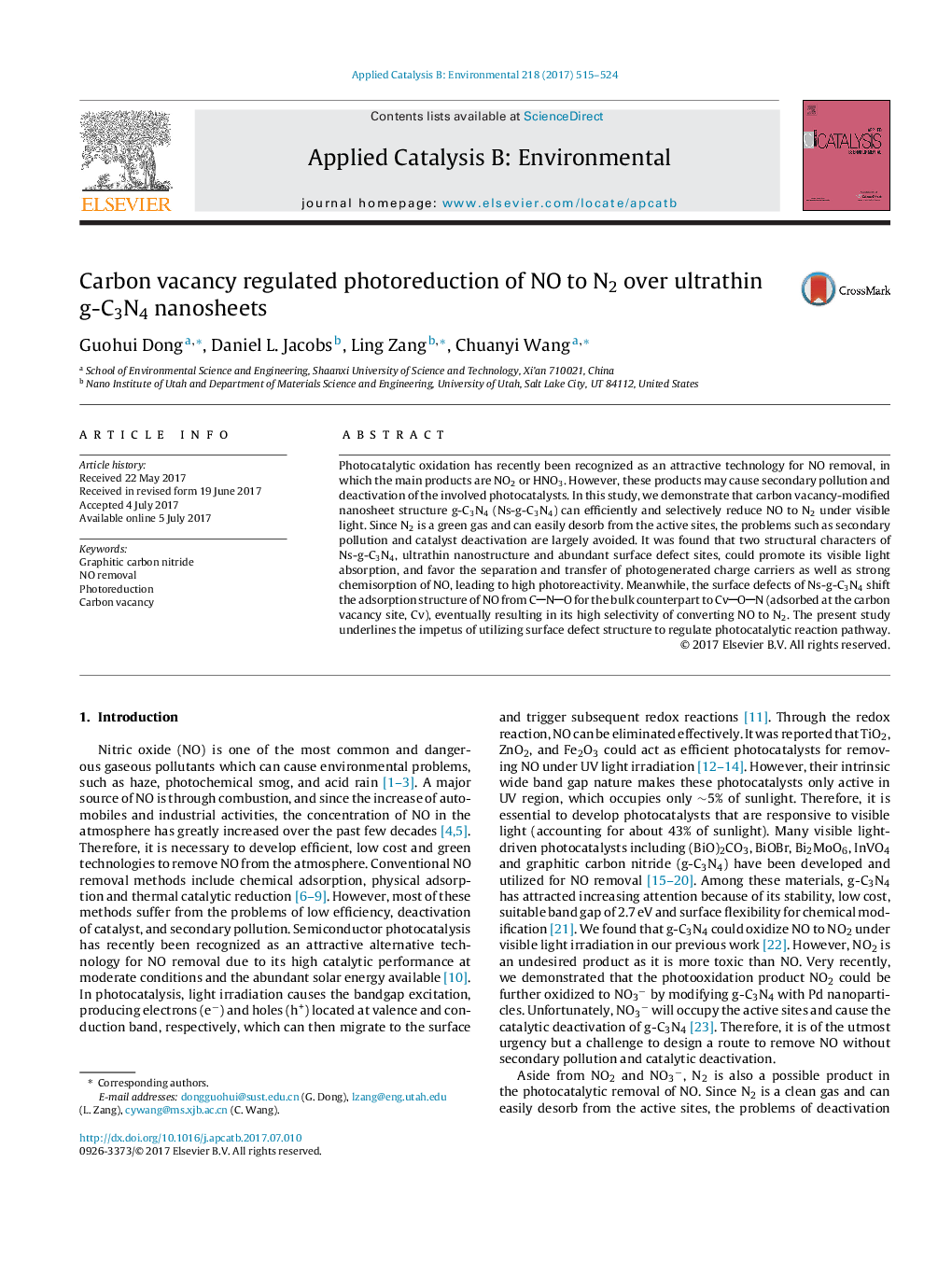| کد مقاله | کد نشریه | سال انتشار | مقاله انگلیسی | نسخه تمام متن |
|---|---|---|---|---|
| 6453791 | 1418802 | 2017 | 10 صفحه PDF | دانلود رایگان |

- We report on a simple method of synthesizing ultrathin nanosheets of g-C3N4 and the application as photocatalyst for NO removal.
- Ultrathin nanostructure and abundant surface carbon vacancy, could promote its visible light absorption, and favor the separation and transfer of photogenerated charge carriers as well as strong chemisorption of NO.
- Carbon vacancy-modified nanosheet structure g-C3N4 (Ns-g-C3N4) can efficiently and selectively reduce NO to N2 under visible light.
- The surface carbon vacancy of Ns-g-C3N4 shift the adsorption structure of NO from CNO for the bulk counterpart to CvON.
Photocatalytic oxidation has recently been recognized as an attractive technology for NO removal, in which the main products are NO2 or HNO3. However, these products may cause secondary pollution and deactivation of the involved photocatalysts. In this study, we demonstrate that carbon vacancy-modified nanosheet structure g-C3N4 (Ns-g-C3N4) can efficiently and selectively reduce NO to N2 under visible light. Since N2 is a green gas and can easily desorb from the active sites, the problems such as secondary pollution and catalyst deactivation are largely avoided. It was found that two structural characters of Ns-g-C3N4, ultrathin nanostructure and abundant surface defect sites, could promote its visible light absorption, and favor the separation and transfer of photogenerated charge carriers as well as strong chemisorption of NO, leading to high photoreactivity. Meanwhile, the surface defects of Ns-g-C3N4 shift the adsorption structure of NO from CNO for the bulk counterpart to CvON (adsorbed at the carbon vacancy site, Cv), eventually resulting in its high selectivity of converting NO to N2. The present study underlines the impetus of utilizing surface defect structure to regulate photocatalytic reaction pathway.
142We report on a simple method of synthesizing ultrathin nanosheets of g-C3N4 and the application as photocatalyst for converting NO to N2. Ultrathin nanostructure and abundant surface carbon vacancies, could promote its visible light absorption, and favor the separation and transfer of photogenerated charge carriers as well as strong chemisorption of NO, leading to high photoreactivity. Meanwhile, the surface carbon vacancies of Ns-g-C3N4 shift the adsorption structure of NO from CNO for the bulk counterpart to CvON, eventually resulting in its high selectivity of converting NO to N2.
Journal: Applied Catalysis B: Environmental - Volume 218, 5 December 2017, Pages 515-524